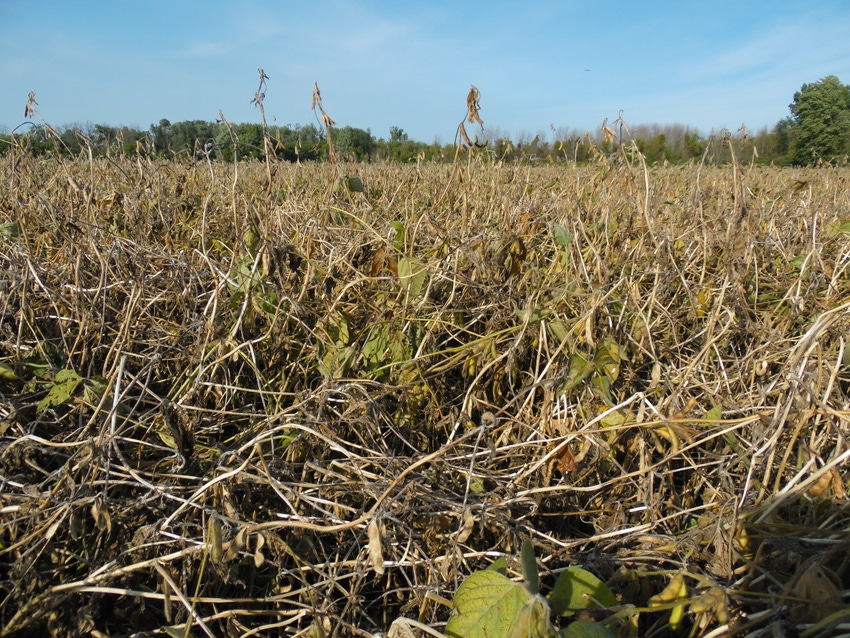December 20, 2017

Think Different
If economics dictate continuous soybeans in 2018, reduce disease and pest risks.
Select disease-free fields if possible.
Pick resistant/tolerant varieties.
Rotate resistance source or at least varieties.
Utilize seed treatments and foliar fungicides as needed.
Plant in warm soil at reduced seeding rates and in wide rows.
Expect reduced yields.
It is hard to beat a corn/soybean rotation, but current prices for crops and inputs make soybeans after soybeans an attractive option. However, a likely yield penalty, increased potential for disease, nematodes and nutrient mining all have to be taken into account.
"The bottom line is it is best not to change rotations if you don't have to," warns Michael Staton, senior soybean educator, Michigan State University Extension. "In tight times, you have to look at the short-term economics, but consider what the long-term cost will be if SCN or a soil-borne disease becomes established."
To help producers who do rotate soybeans into soybeans, Staton recently updated his “Recommendations for Planting Soybeans after Soybeans,” originally co-authored with Dr. Martin Chilvers, MSU extension field crop pathologist. He advises growers to pick their fields carefully with an eye on past disease and pest pressures, as well as carefully selecting varieties and crop protection aides.
Watch disease, SDS history
"The best strategy is to avoid planting soybeans into fields that were infested with white mold, sudden death syndrome (SDS) or soybean cyst nematodes (SCN) the previous year, as that has the potential to cause large yield losses in the current year and in future soybean crops," he says.
If problems are present, he recommends selecting varieties with the highest level of resistance/tolerance available for the identified challenge. He warns against trying to compare ratings between companies as the rating scale can vary. Only use a given company's scale for comparing their varieties.
"Consider using ILeVO seed treatment in combination with SDS and SCN tolerant varieties when planting into fields with a history SDS," adds Staton. "If planting into fields with a history of white mold, be prepared for yield loss if you have cool, wet weather from June to early August."
Vary maturity, population, row spacing
To reduce potential yield loss due to white mold, he advocates resistant/tolerant varieties, tillage to bury sclerotia, reduced populations and wider rows (>20”). Planting a range of maturity dates and careful selection and application of foliar fungicides can also help.
If SCN is a concern, he advises sampling fields for the pest level and SCN type and planting a variety with a different source of resistance than was used in the previous year.
To reduce the risk of Pythium seedling disease, plant after soil temperatures reach 60° F and use seed treatments effective against the disease. To reduce Phytophthora damage, plant resistant/tolerant varieties and use a seed treatment.
Don't short-change nutrient needs. Unlike in a corn rotation, fertilizer may be needed. Potassium contributes to disease resistance and potassium-deficient plants attract soybean aphids.
"Make sure benefits exceed the risks, and manage the increased risk with proven practices," advises Staton.
You May Also Like




